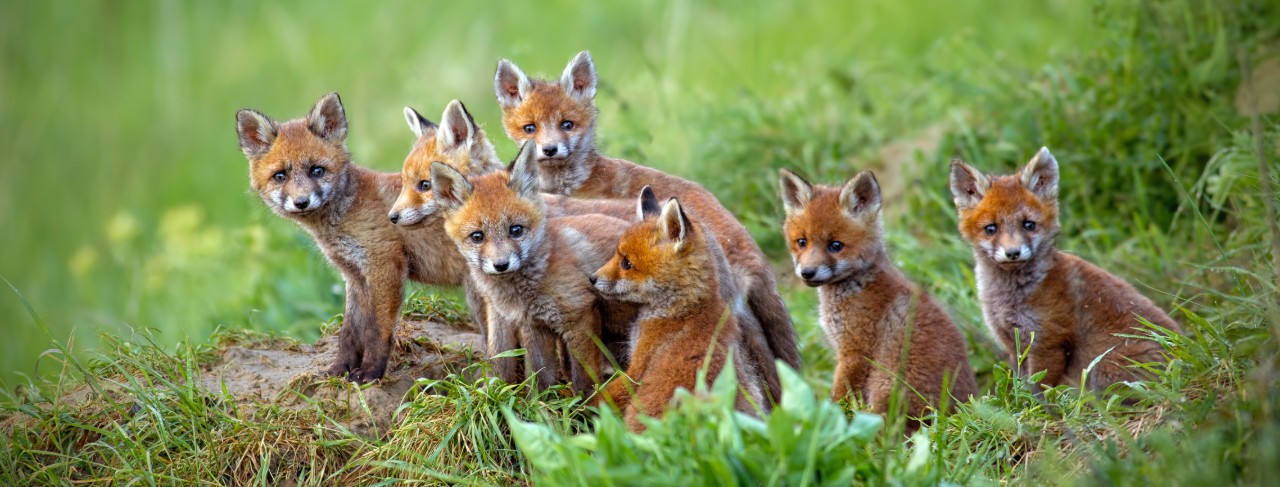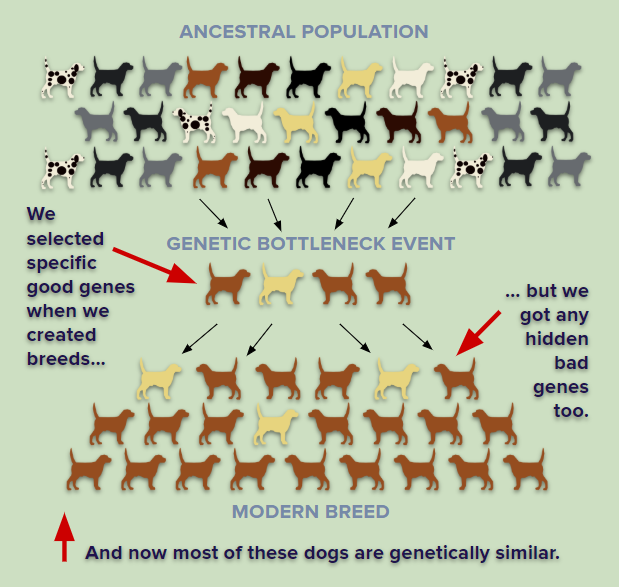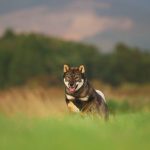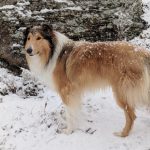
Two sides, same coin: genetic diversity and selection
Or, what can we learn from our friends, the wild foxes?
There is today a great debate in purebred dog communities – one that has become in many ways less contentious with maturity and will hopefully ripen into a new collective wisdom about what it means to be a conscientious breeder and to make choices that contribute to the health and longevity not only of our dogs but also of our breeds.
That debate is this: What is the more important breeding goal, genetic diversity or selection?
For many breeders, the whole point of breeding is selection for breed type. For others, the important question is health via genetic diversity. And both sides get really very grumpy at the other side because they both think the implication is that if you breed for type, you don’t care about health, or if you breed for health, you don’t care about type.
I look very much forward to the day when those assumptions become as silly as they are in reality.
I know not a single show breeder who doesn’t care about health.
I know not a single diversity breeder who doesn’t care about type.
I do know breeders who have typey lines and want healthier dogs and I know breeders with diverse lines who want typier dogs.
And of course I know lots of breeders whose programs have plenty of both health and type. To be frank, only those who care about both will be able to contribute constructively to the future of a breed. Preservation requires BOTH the long term health and viability of a breed offered by genetic diversity AND the proper historical phenotype that makes a breed unique.
So let’s talk about another concern. There is a perception that if you breed for type, you cannot have diversity, and that diversity will ruin your hard fought for type. There is also the perception that the only way to get type is to limit diversity.
Here’s the best way to consider this. Wild animals with large populations breed randomly and instinctively maintain a great deal of genetic diversity. With rare exceptions for very isolated populations, they tend to be quite diverse. So do they all look very different?
Think of a red fox. Now think of another red fox. Are they both recognizably red foxes? If they were a breed of canine, would they be considered reliably recognizable and therefore typey? Of course. And yet as wild animals, they are no doubt more genetically diverse than any purebred domesticated canine. Of course, we know foxes come in a range of colors and size, influenced by their habitat, but they are all both phenotypically (in appearance) and genotypically (in the genes) a single species. They are very consistent in appearance, yet genetically diverse. This is true of thousands of species.
How does this happen? Via natural selection. Foxes are foxes and their shape and size has been shaped over eons of adapting to their habitat. In the desert, for example, foxes closer to the color of the dry earth survive better, so they are lighter in color and perhaps smaller having adapted to the amount of available prey.
With natural selection, change is gradual as those animals best fit for an environment survive and those less fit are less likely to reproduce. This is the basic principle of evolution.
When our forebears decided to cultivate plants and animals for our usage, we became part of natural selection – in that what we like became what we nurtured. Any trait we liked gave a plant or animal a competitive advantage. And as we humans gradually influenced the world around us, we made domesticated breeds and nurtured the animals that had attributes and appearances that we preferred, enhancing those traits and making the genes for them more common in each species.
It is easy to forget that natural selection is harsh. Animals with coloring that is less appropriate for their habitat may simply not survive to reproduce – a predator may have seen them, but not their better camouflaged siblings, putting them at greater risk and limiting the likelihood they will pass on their genes. So too may slower animals, weaker animals, overly small or large animals meet their demise – as can any animal with a defect or a new mutation that lessens its fitness.
This selection is what makes foxes reliably foxy. And foxiness is what makes a fox survive – his shape, size, instincts and hardiness are all essential for survival and all are consistent in the species along with (surprise!) ample genetic diversity. This kind of gradual selection shapes the forms of species slowly over generations, and as DNA recombines and mutates over eons, the ones that offer competitive advantages are more likely to be found in the next generation and the ones that don’t won’t be reproduced.
In that same way, ample genetic diversity is essential for survival, or wild species would not all be so diverse, and natural selection would not favor it.
The phenomenon of consistency in appearance in foxes, lions, tigers or bears is the answer to concerns about whether purebred dogs can be consistent in type and genetically diverse.
The phenomenon of consistency in appearance in foxes, lions, tigers or bears is the answer to concerns about whether purebred dogs can be consistent in type and genetically diverse. The answer is of course they can. The genes that control what we breeders think of as type are specialized but few. Every dog, whether a Papillon or a Saint Bernard, has to have good genes for the same basic dog functions – all their hearts and livers and spines and brains and stomachs and immune systems should work well. These complex, necessary and universal functions nearly always work best with lots of variation in both individual dogs and within the population. Appearance genes – the ones that make dogs look like one breed or another do not require variation – they are hopefully fairly similar from one animal to the next since they usually have similar habitats and therefore required traits for survival. But appearance genes make up a tiny fraction of the genetics necessary for survival.
There is of course a way to hurry the process of making all the animal consistent in certain traits, but speed comes with a cost.

When a population runs into a specific sudden natural event, like a change in environment or the introduction of a new disease, it can experience a sudden loss of a large percentage of individuals, leaving only those with the genes that allow for survival in the new habitat. With a reduced population, there may then be some inbreeding. In the wild, animals nearly always choose the least related, available and fit mate, and often those that survive are more related, even closely related, so those will be the mates. This results in many more animals with the genes that allowed survival, but there will have been a significant loss of genetic variation in all the other genes.
Over eons again, the population will grow, and, depending on the mutation rate in the species, population size, habitat and good luck, diversity may return through mutation and recombination if the species does not encounter further challenges to which it cannot adapt. Importantly, they can only get back to higher levels of genetic variation over hundreds of generations.
They can’t get this back in a human lifetime or two.
Whether that’s good or bad depends on whether the surviving individuals had some hidden bad genes, and whether the offspring were subject to a form of selection that gave them a competitive advantage over others. There are many studies now on isolated populations of mammals with only a few survivors and the long term outcomes for them have varied. Here’s a study on sika deer that did well with only 5 transplanted founders. Here’s a study on the famous Isle Royale wolves whose fate was not good.
So how does this apply to purebred dogs?
First, remember that dogs as a whole are the species. There is ample diversity in the species and millions and millions of dogs on earth. Dogs are not in any danger of extinction and any suggestion of it is purely hysterics.
However, each individual purebred breed – by definition – experienced a significant loss of population as soon as its stud books were closed and no other genetics from outside the breed came in. This effectively lessened each breeds ability to adapt, while also making it possible for them to be consistent in appearance and temperament. It also left the breed likely to be influenced generations hence by any hidden good or bad genes in the remaining or founding individuals.
Each breed will have experienced a different amount of loss at founding, depending on how many dogs made up the first generation of the breed, and how much variation there was in them collectively. Each breed will have had a differing amount of loss since that time as well, depending on how closely bred the dogs were after that and what traits were most important. Some working breeds for instance were bred for complex instinctive traits and consistency of appearance was less important. These may have retained more overall genetic variation as a result. Some breeds had extremely popular sires over the decades that everyone bred to, and this reduced genetic diversity further.
Those losses of diversity may be meaningful or not. Some breeds are surprisingly healthy, despite their narrowed gene pool – while others have large populations where the breed is nevertheless so homogeneous, they all have the same genetic health risks. Most purebred breeds today, as opposed to 150 years ago, are quite consistent in type, immediately recognizable as their own breed and most have enough well structured individuals with proper temperaments that there is also ample consistency in the breed. This is because our goal as breeders for the past 100 years was to gain consistency in appearance. In some cases, the price was the loss of genetic variation for other necessary or desirable functions.
What does all of this mean for purebred breeders today?
It will help breeders to think of the two aspects, diversity and type, separately – the genes that control type are one smaller set of genes that are ample in each breed. The overall genetic variation that is good for all other systems – which is not inherently linked to type – cannot be tested for gene-by-gene. The presence of overall good genetics can only be seen when a dog has lived a long life with robust good health.
In order to keep our breeds healthy and viable, we have to keep as much overall variation as we can in our lines and breeds, even as we select for type.
In order to keep our breeds healthy and viable, we have to keep as much overall variation as we can in our lines and breeds, even as we select for type. This means we should breed our fittest dogs with appropriate type, and not base fitness on only on a few diagnostic DNA tests, but overall health. This is best seen by judging functional capacity. Are they athletic? Do they eat well and digest well? Are they smart enough and nice enough to manage life with modern humans? Did they need extra help to survive when newborn? Are we keeping good records of longevity?
Breeders can have an enormous positive effect on their breeds by only breeding dogs that nature would not have eliminated. Selection for type is important – and in purebred dogs selecting for type can be similar to selecting for fitness in appearance – like in the size and colors of foxes best suited to their habitat. However, selection for overall, robust health is equally important and this favors diversity. By selecting for robustness – my mentor calls such dogs “good doers” – we select for the unseen genetics of both health and diversity. And by maximizing the retention of diversity, we keep more good genes in the gene pool and lessen the likelihood of rising frequencies of bad hidden genes.
When it comes time to pick mates for our dogs, we again have to consider the two factors. It is usually better to pick dogs with the appropriate type that are not closely genetically related than those that are closely related in order to preserve the genes for traits we can see, and keep the existing genetic diversity in the genes we can’t see. Dogs and other animals, as well as humans, do this by instinct. “Opposites attract.” Couples either have “chemistry” or they don’t. Bitches will sometimes reject certain studs and encourage others. Sometimes bitches prefer one brother over another – and it’s probably for a reason we don’t see.
This is not to say don’t linebreed. To be fair, any purebred breeding is a line breeding because all purebred breeds have the same original ancestors. And of course dogs will breed to relatives – they will usually, however, prefer the least similar ones. We now know that sometimes two half siblings can be genetically very different, or as close as full siblings because now we can test for that. We breeders simply have to make sure our linebreedings aren’t too close, and therefore costly in the context of loss of variation for our individual line and breed.
After 100 years or more of closed studbooks, we have to be very careful to manage our existing gene pools well so as to keep the traits we prefer without losing further diversity. We therefore need to know the genetic status of our breeds, we need to know how genetically similar our dogs are to one another, we need to know how similar they are to the rest of the breed, we need to know the health status of close relatives, and we need to know how fit each breeding animal is.
And that’s a lot to know.
If breeders, new or experienced can just keep two things in mind to keep our breeds healthy and consistent, like our friends the foxes – it should be to breed for diversity, and select for fitness.
No matter what methods breeders use – which genetic testing, which pedigrees, which record-keeping system, which goals their breeding program has – breeding dogs well is a complex and challenging endeavor. As breeders ourselves, we at BetterBred aim to help breeders in all aspects preserve and protect their historic breeds.
 Previous Post
Previous Post Next Post
Next Post


